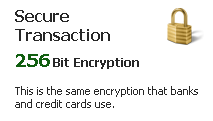520 E. Kendall Drive, Suite C - Yorkville, IL 60560

Bill Payment
We understand that dealing with health issues while also worrying about having to pay your medical bills can be an overwhelming and stressful experience. For that reason, we are helping to make the process easier with the creation of a Patient Payment Portal.
If your account has been placed in suspended status or you have received a final notice you are now required to fill out the credit card on file form with our office in order to remove the suspended status from your family’s account. Please note, it can take up to 24 hours for your payment to post to your account and for your account(s) status to be updated.
Explanation of Copay, Deductible and OOP Max
Copay
A copay is a fixed out-of-pocket amount paid by an insured for covered services. It is a standard part of many health insurance plans. Insurance providers often charge co-pays for services such as doctor visits or prescription drugs.
Copays are a specified dollar amount rather than a percentage of the bill, and they are paid at the time of service. Not all medical services ask you for a copay. For example, some insurance companies do not require a copay for annual physicals/well child visits.
Deductible
The amount you owe for health care services your health insurance or plan covers before your health insurance or plan begins to pay. For example, if your deductible is $1000, your plan won't pay anything until you've met your $1000 deductible for covered health care services subject to the deductible. The deductible may not apply to all services.
Out-of-Pocket Max
The most you pay during a policy period (usually a year) before your health insurance or plan begins to pay 100% of the allowed amount. This limit never includes your premium, balance-billed charges or health care your health insurance or plan doesn’t cover. Some health insurance or plans don’t count all of your co-payments, deductibles, coinsurance payments, out-of-network payments or other expenses toward this limit.
Coinsurance
Your share of the costs of a covered health care service, calculated as a percent (for example, 20%) of the allowed amount for the service. You pay coinsurance plus any deductibles you owe. For example, if the health insurance or plan's allowed amount for an office visit is $100 and you've met your deductible, your coinsurance payment of 20% would be $20. The health insurance or plan pays the rest of the allowed amount.
INSURANCE
Each insurance plan is unique. Many plans have limits and/or exclusions that apply to your child's medical care. We recommend that you check with your individual plan to find out what services are covered, if we are an in-network provider, and how much they will reimburse you for medical expenses. The office accepts major medical in-network PPO insurance. The best way to check if we are in-network with your insurance is to call them and provide our billing NPI (National Provider Identifier) number: 1346598190.
Right now, we are currently accepting new patients with the following insurance:
- BCBS – PPO plans only
- If you have a ministry sharing plan you will be classified as a self-pay patient.
We are not currently accepting any new patients with the following insurance:
- Aetna
- Cigna
- United Healthcare /UMR– We are unable to see you as self-pay
- HMO plans of any kind– We are unable to see you as self-pay
- Humana
- Medicaid – We are unable to see you as self-pay
- Tricare – We are unable to see you as self-pay
- Temporary plans
- Short term plans
- Ancillary plans
- Foreign exchange plans
- Out-of-state student plans
- Third-party plan
CURRENT PATIENTS
- We will continue to see you if you currently have United Healthcare. If you are a current patient and switch to United Healthcare, we will still see your family if it is a plan we accept.
- We will continue to see you if you currently have Aetna. If you are a current patient and switch to Aetna, we will still see your family if it is a plan we accept.
- We will continue to see you if you currently have Cigna. If you are a current patient and switch to Cigna, we will still see your family if it is a plan we accept.
*We are unable to bill secondary insurance plans.
*For all personal injury, motor vehicle and work-related injury appointments please go to the nearest ER or urgent care facility for treatment and follow-up care.



